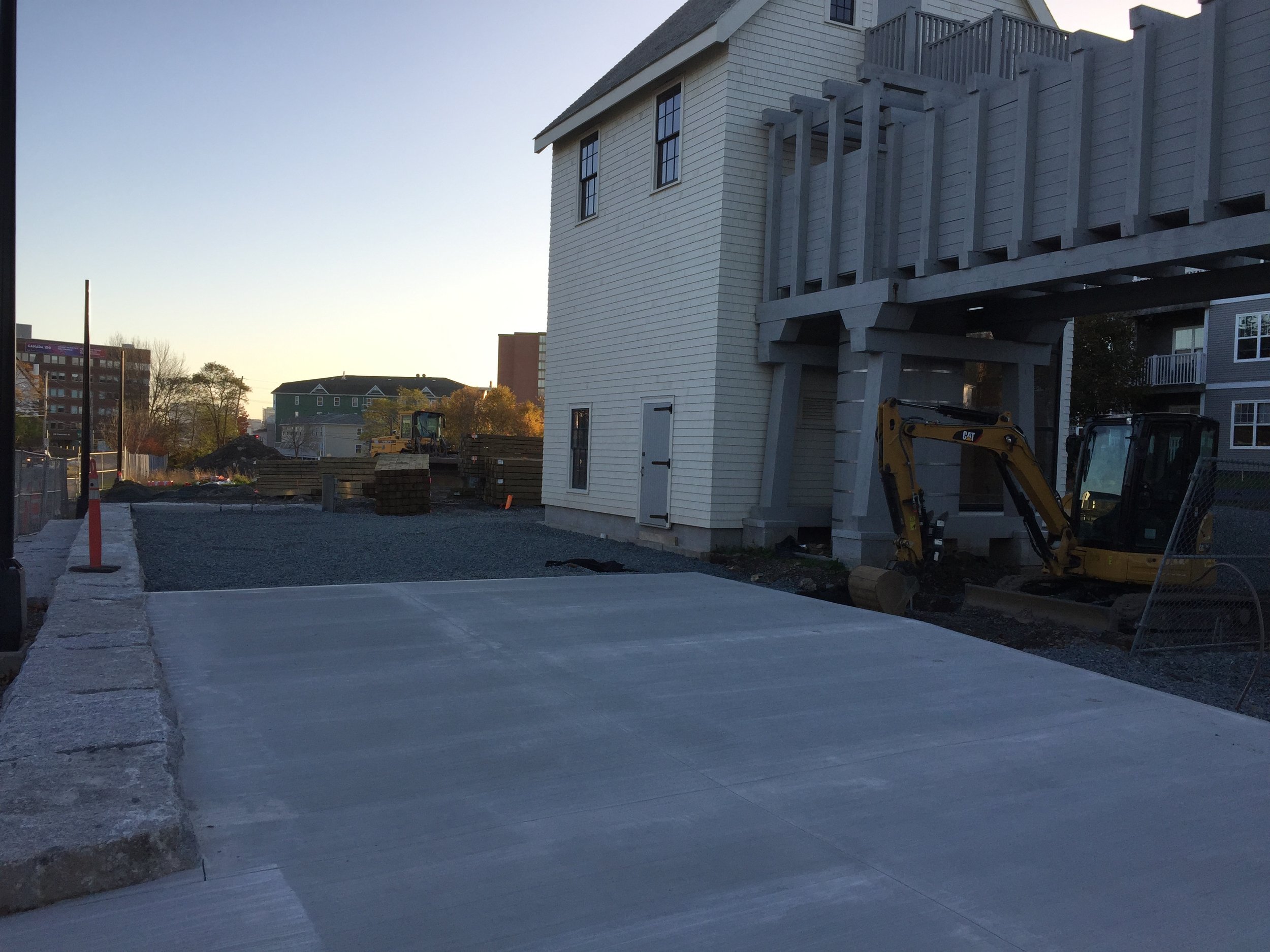The Marine Railway Flume House on the Dartmouth Greenway is really coming together! The project is a life-sized reproduction of the Flume House that controlled the Dartmouth Marine Railway from 1861-1871, allowing boats to travel from the Halifax Harbour into Sullivan’s Pond and thus enter the Shubenacadie Canal waterway. The Flume House used gears and a turbine to harness the power of the water flowing from Sullivan’s Pond, and then used that power to move a boat-carrying Cradle up and down the set of tracks that existed between the pond and the Harbour. The ongoing project to recreate this impressive structure is an initiative of the HRM, with support from the Shubenacadie Canal Commission on its historical aspects. The Commission is in the home stretch of fundraising efforts, but still needs a remaining $15,000 to complete the structure’s historic elements. Click here to donate. For more information on how the Flume House and the Marine Railway worked, check out this great video that outlines the process, or stop by the Fairbanks Centre at Shubie Park to see a smaller, complete model of the structure.
Geese at Sullivan's Pond
The Sullivan's Pond geese are enjoying the beautiful fall weather. In the background you can see one of the two navigational markers used during the time that the canal was in operation. These round stone markers in Sullivan's Pond were built by Scottish and Irish stone masons in 1831. They mark the entrance to the first lock in the canal system located at the bottom of Lake Banook. Visit Building the Canal to find out more.
Star Park work is progressing
Work is progressing on the Starr Park site. The concrete slab is in place, timber decking is next #historic #shubiecanal #dartmouth
The Beginning of the Shubenacadie Canal
July 25th, 1826
On this date one hundred and ninety one years ago the sod was turned to launch the building of the Shubenacadie Canal. The man turning the sod was Lord Dalhousie, Governor General of British North America. This was taking place near the present location of Lock 2, not far from the shores of Lake Micmac. It was estimated that about two thousand people had come to witness the ceremony which was also attended by a Guard from the Citadel who were responsible for firing a Canon which had been transported to the site. Once the ceremony was over the Canal workers began digging what we now know as the Cut between Lakes Micmac and Charles. However, the dignitaries made their way to a fashionable home in downtown Dartmouth where the celebration was continued.
-Bernie Hart
Lord Dalhousie, Governor General of British North America





